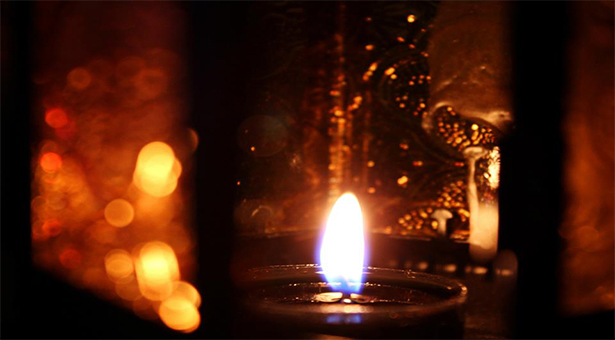
Written and media by Denee Menghini
This year, Sunday, December 1 was more than just the first day of December; it was also the first Sunday in the liturgical season of Advent. Many churches across the country celebrated by light the first candle of Advent and many children tore into their Advent calendars for a piece of chocolate first thing in the morning. This season of anticipation and preparation

can be an incredibly special time, but many are hurrying through the season in haze of business that leads to Christmas. So now, let’s take some time to examine the realities that these symbols of candles and chocolate point to in order to better engage Advent.
The season of Advent marks the beginning of the liturgical calendar of the church and begins on the fourth Sunday before Christmas day. A common tradition in many churches is to light a candle on each Sunday, which all come together in the Christ candle on Christmas Eve. Candles serve a simple function, that is, to bring about light. So, each week that another candle is lit, a little more light is brought into the world as the hope of Christmas draws nearer. Each of the four candles possesses a different meaning; the first signifies expectation, the second hope, the third joy, and the fourth purity.
Here the candles point to the reality of the light that Christ’s birth brought into a dark world. Furthermore, the candles remind the church of the light they are called to be in the world. This light brought about by four little candles comes at a distinctly dark time of the year. With daylight savings time long gone, December is marked by early sunsets and long evenings of darkness. This makes the anticipation of Christ’s coming, the ultimate light, all the more pronounced.

The other prominent symbol of the Advent season is the Advent calendar. The common cultural interpretation of this symbol is often that it is a countdown to Christmas day with little trinkets present to prepare for the massive amounts of presents soon to come. The calendar comes from a humble history, in which families would mark the days leading up to Christmas by marking their doors with chalk. The calendar that we know today was made popular after WWII. No matter what your Advent calendar looks like, though, the idea of marking time is central to this symbol.
The marking of time represented in the Advent calendar refers to two separate sets of time. The first acknowledges the time the nation Israel spent waiting for Christ their savior to come. God had promised this people a messiah, but he did not give them an expected time of arrival. Instead the Israelites waited and trusted, knowing God is faithful and that he would keep his promise. The beauty in this marking of time is that each year we are given the opportunity to reenact this sacred story. In the same way, during Advent we wait for Christ our savior to come knowing that he always will.
The challenge in engaging advent is clear. Advent calls us to prepare for the light and to wait. These are difficult tasks in the busiest season of the year, but there are many ways to intentionally engage Advent. The simplest may be to slow down, anticipate the fulfillment of God’s promise, and look for the light.
Included below is a brief conversation with GC Religion professor, Dr. Brian Hartley for even more insight into this Holy season.




























